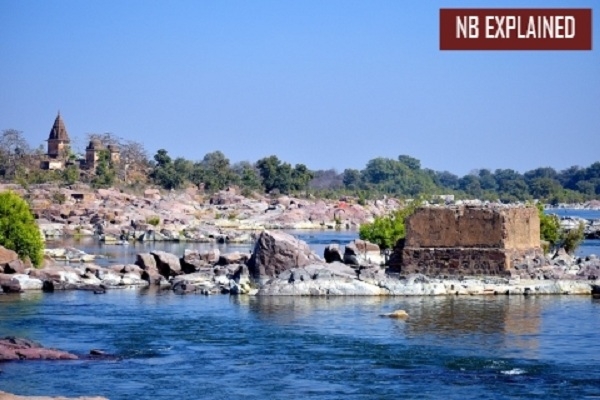Explained: The historic Ken-Betwa river interlinking project
Total Views |
New Delhi, Mar 24: On the occasion of World Water Day, the state governments of Uttar Pradesh and Madhya Pradesh on Monday signed a memorandum of agreement with the Union Jal Shakti Ministry to implement the Ken-Betwa river interlinking project during the virtual launch of the 'Catch the Rain Campaign'. The deal was signed through a video conference in the presence of Prime Minister Narendra Modi.

Purpose
This agreement will herald the beginning of inter-state cooperation to implement the vision of former PM Atal Bihari Vajpayee to carry water from areas that have surplus water to drought prone and water deficit areas through the interlinking of rivers.
Ken-Betwa Link Project
The rainfall pattern in India is highly skewed with most of the rainfall happening in about 100 days in a year. Also, due to geographical variations, India has some of the driest and wettest places in the world. Keeping this in view, the National Perspective Plan was prepared by the then Ministry of Irrigation to transfer water from water surplus basins to water-deficit basins.
Also Read: Leaked official secrets? 'Not afraid, will prove my point in court', Fadnavis meets MH Governor
The Ken-Betwa Link Project is the first project under the National Perspective Plan for the interlinking of rivers. Under this project, water from the Ken river will be transferred to the Betwa river. Both these rivers are tributaries of river Yamuna.
Ken-Betwa Link Project involves two phases. Under Phase-I, one of the components - Daudhan dam complex and its appurtenances like Low Level Tunnel, High Level Tunnel, Ken-Betwa link canal and Power houses - will be completed. While in the Phase-II, three components - Lower Orr dam, Bina complex project and Kotha barrage - will be built.
Also Read: Gabbar comes back and debutants Krunal, Prasidh star as India beat England
The project will provide an annual irrigation of 10.62 lakh ha, drinking water supply to about 62 lakhs people and also generate 103 MW of hydropower.
History
It was in the 1980s when the Union government had first emphasized on interlinking of rivers to take water from surplus regions to those facing deficit. So, this region was also promised a project - the linking of the Ken and Betwa rivers. According to the reports, the cost was estimated to be slightly above Rs 1,900 crores (1994-95 prices).
Since then, there were many prime ministers and chief ministers who could have considered this porject but the project didn’t move beyond the feasibility reports and detailed project reports. On the other hand, the cost of this infra project, considered so crucial for the region, kept on increasing.
In other words, this is also one of those projects which have suffered due to lack of consideration of the governments that passed by. However, the project came into life after the BJP government came to power in 2014 and took the Supreme Court judgment of 2012 seriously which had directed the Centre and States to start working on interlinking rivers saying that these projects were in ‘national interest’.
Benefits of the Ken-Betwa Link Project
The project lies in Bundelkhand, a drought-prone region, which spreads across 13 districts of Uttar Pradesh and Madhya Pradesh. So, the project will be of immense benefit to the water-starved region of Bundelkhand, especially in the districts of Panna, Tikamgarh, Chhatarpur, Sagar, Damoh, Datia, Vidisha, Shivpuri and Raisen of Madhya Pradesh and Banda, Mahoba, Jhansi and Lalitpur of Uttar Pradesh.
Also Read: Gandhi Peace Prize 2020 conferred on Bangabandhu Sheikh Mujibur Rahman
"It will pave the way for more interlinking of river projects to ensure that scarcity of water does not become an inhibitor for development in the country," the Ministry said in a statement.
Will the project affect the Panna tiger reserve?
According to a written reply given by the Minister of State for Jal Shakti Rattan Lal Kataria, out of the 6,017 ha of forest area coming under submergence of Daudhan dam of Ken Betwa Link Project, 4,206 ha of the area lies within the core tiger habitat of Panna Tiger Reserve.
Also Read: UK Police, Oxford University begins investigation in Rashmi Samant case
The estimated cost of the Ken-Betwa Link Project
According to the Comprehensive Detailed Project Report, the cost of the Ken-Betwa Link Project is estimated at Rs 35,111.24 crore at 2017-18 prices.